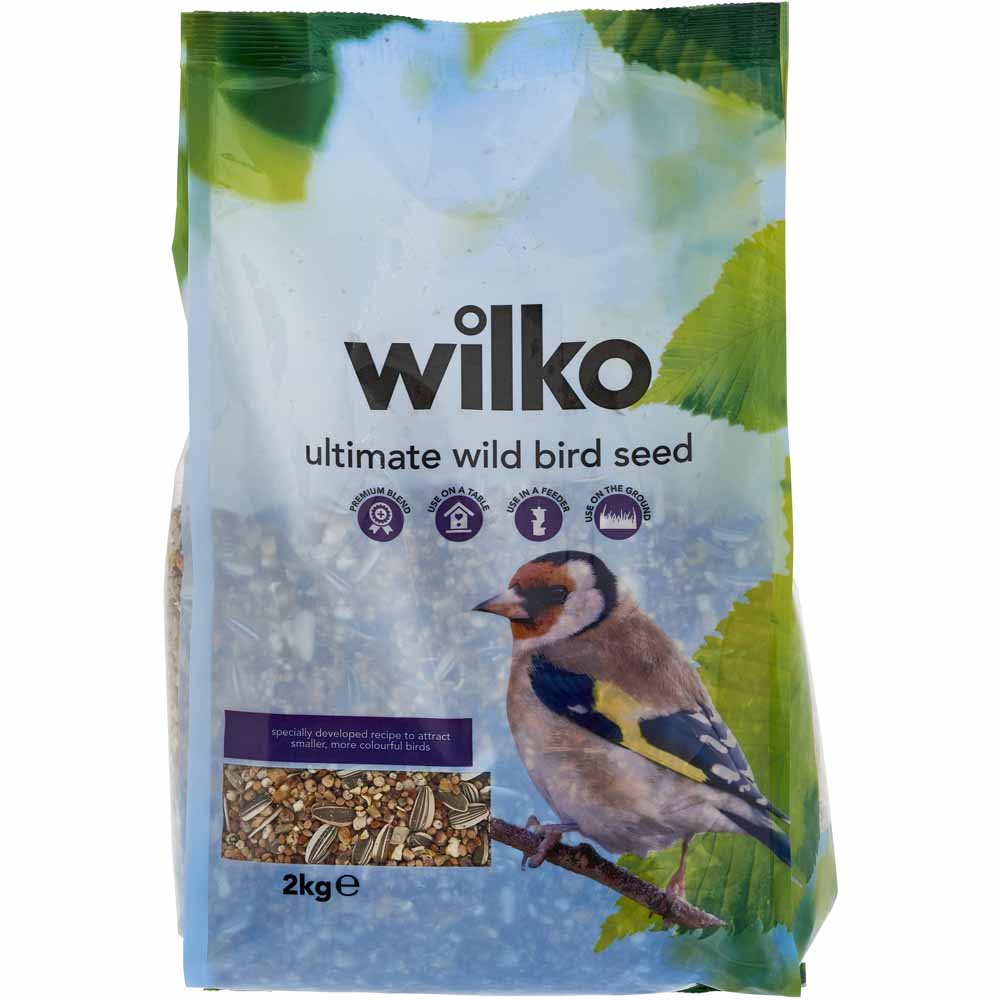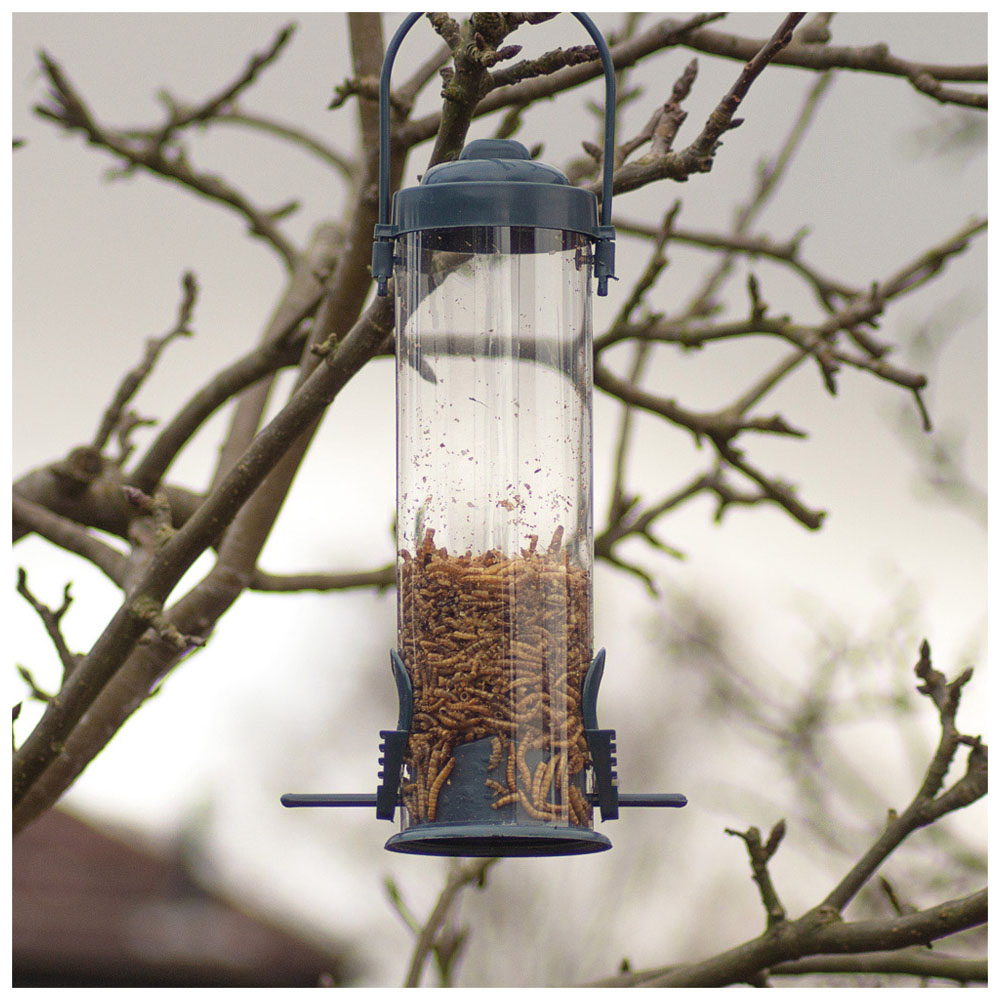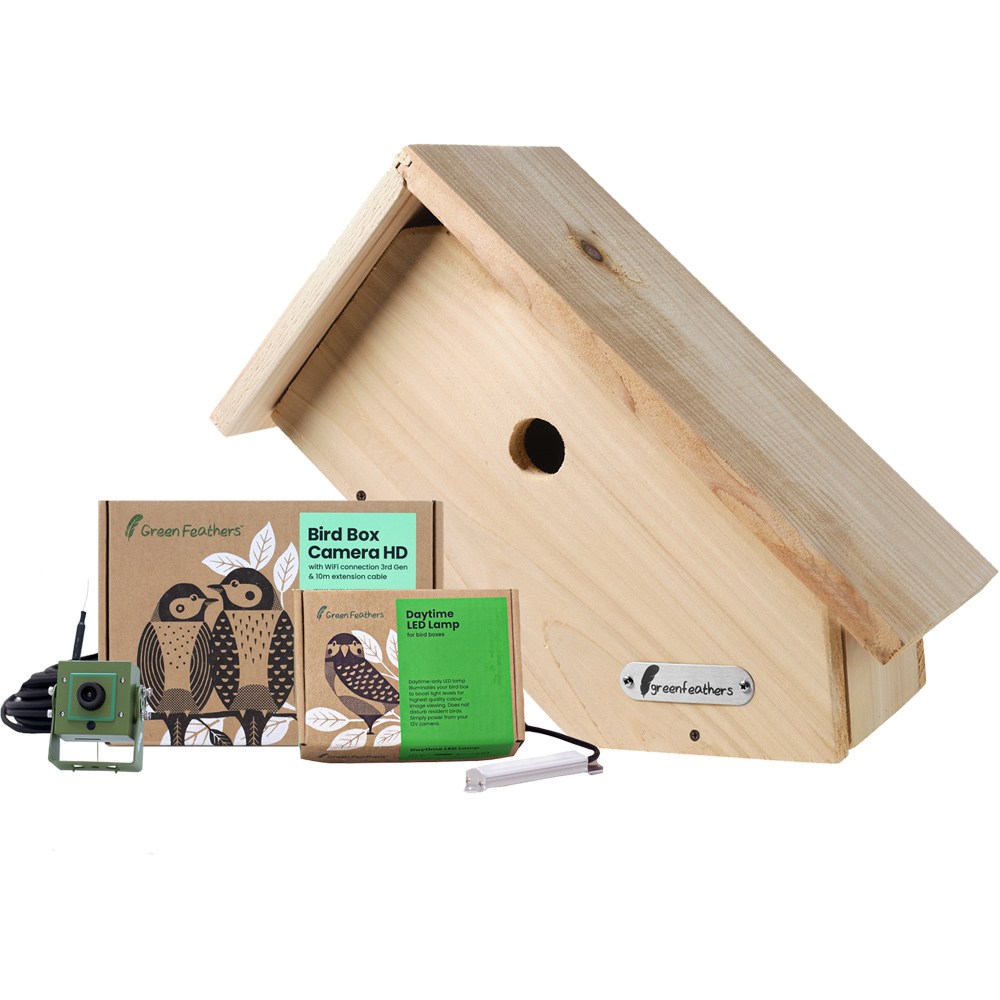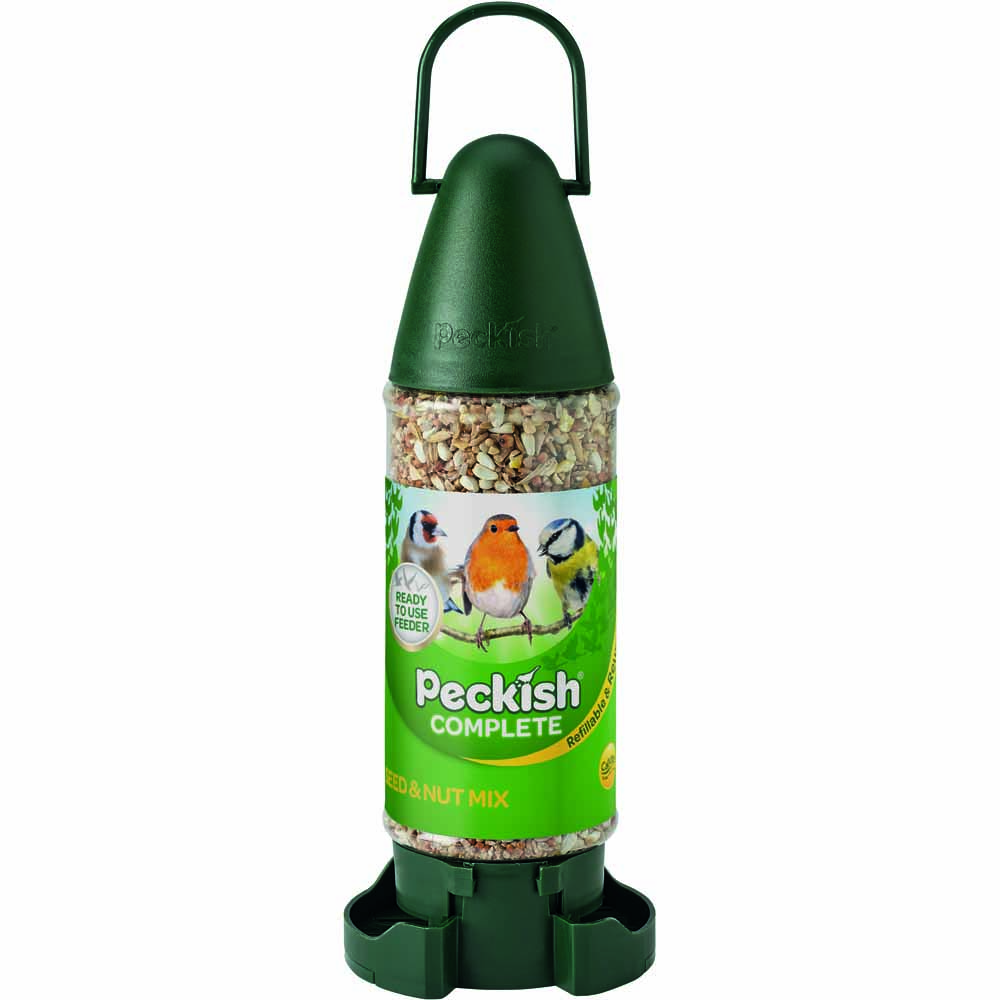How to feed wild birds
There’s something very pleasant about watching birds in your garden. Knowing how to feed wild birds will attract a variety of native birds into your garden, so you can enjoy watching them and the benefits they bring!
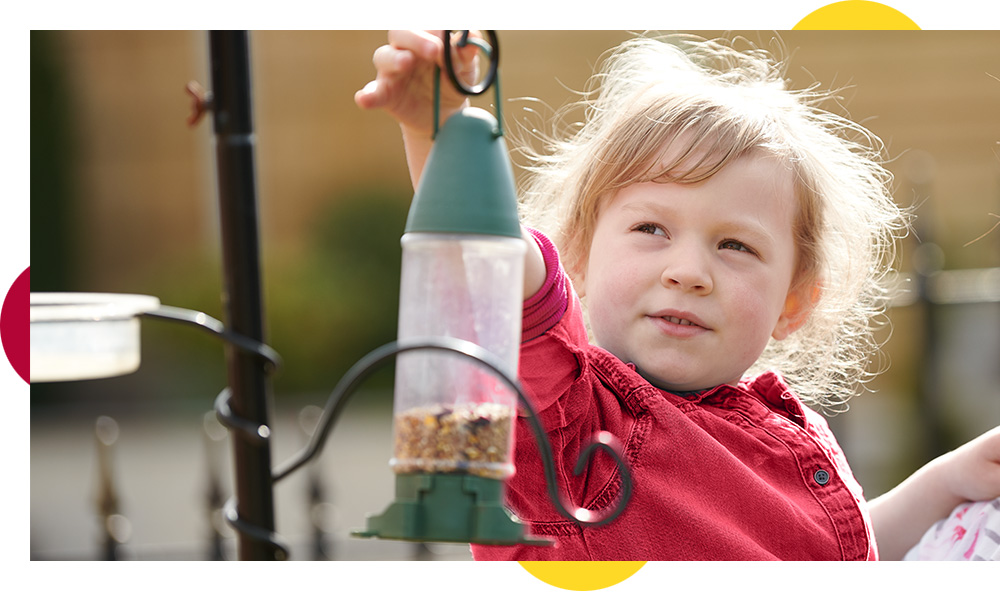
Why is it important to feed wild birds?
Looking after our feathered friends will keep their populations thriving. Wild birds play a vital role in our ecosystem by eating insect pests which would otherwise munch on your garden plants. Save money on harmful insect repellents and enlist an army of birds instead!
It’s also a gratifying way to bring your garden to life, as wild birds are a joy to watch – encouraging them to visit is a nice way of getting the kids interested in nature too.
What is the best wild bird food?
You should feed wild birds all year round, and there’s lots of choice when it comes to wild bird feed. Having a variety available is the best way to tempt different species and enjoy the colour and entertainment that birds bring.
Here’s an overview of the most popular options on wilko.com and what time of year we’d recommend using them:
All year: seeds, peanuts, sunflower hearts
Wild bird seed mixes are a reliable all-rounder, loved by seed-loving species like tits, finches, and sparrows. A seed mix tends to please most birds and is normally made up of sunflower seeds, millet, maize, and other nutrient-rich seeds.
Sunflower hearts are packed with energy and will give wild birds the momentum they need to fly through their day-to-day routines of singing songs, eating insects, and pooping on statues.
It’s difficult to find a native bird which doesn’t love a sunflower seed; everything from coal tits, to chaffinches, bluetits, and thrushes will come rushing to eat at your garden feeder.
Wild bird peanuts are another popular choice, offering good value for money and universally enjoyed, even by larger birds like starlings and woodpeckers. They’re also loved by bears, but don’t worry about that too much if you’re in the UK.
Spring/Summer: dried mealworms
Spring and Summer are seasons of change, where our gardens spring to action and new life begins. It’s the same for birds!
Dried mealworms may look like a Halloween product, but they play a vital role in wild birds’ diet during the fledgling season. They’re packed with calcium, protein, and fat to support strong eggs and healthy bones in young chicks, so you’d be supporting future generations of beautiful birds – good on you!
Autumn/Winter: fat balls, suet
Fat balls for birds and foods rich in suet are a cold weather classic, keeping your local wild birds fuelled in the colder months when their natural food sources are scarce. They’ll thank you in summer when they bring their chicks to visit – probably one of the most gratifying sights we can ever hope to experience.
Types of wild bird feeders
Now that you’re stocked on wild bird food, the question is now how to let birds access it. You could simply scatter wild bird food on the ground; however, this puts many birds at risk from predators like cats and foxes, and will almost certainly attract mice and rats which are far less pleasant to have around.
Just like their choice of favourite food, certain birds prefer different ways of feeding. Most birds are happy to use hanging feeders, though Robins prefer to eat from the ground or a table. We tried to ask them why, but they wouldn’t tell us.
Seed Feeders
Seed feeders are perfect for seed mixes or smaller bird feed. They’re usually closed-sided with holes that the birds can access at the bottom, reducing the risk of getting seeds all over your lawn or patio.
Peanut feeders
Wild bird peanut feeders have larger holes, usually in the form of metal mesh. They provide easy access to food over the entire feeder, so more birds can use it at once.
Fat Ball Feeders
Using a fat ball feeder will keep these treats out of reach of ground pests like slugs and mice, and make sure they’re not carried away by squirrels.
Bird feeding station
If you see a wide variety of wild birds visiting your garden and don’t have the space for multiple feeders, a wild bird feeding station means you can put out different feeds at once, creating a lovely feature in the garden.
Bird houses & tables
Provide some shelter for your birds with bird houses & tables, adding a beautiful ornamental touch to your garden and providing a safe spot for birds to nest. Choose from a classic bird table, or step up your birdwatching game with a bird house with a built-in camera, perfect for kids and adults alike to marvel at our feathered friends.
Ready filled feeders
We’ve made things easy with ready filled bird feeders which have everything already provided to start feeding wild birds. Simply hang it outside and wait for birds like sparrows, blue tits, and goldfinches to come and say hello!
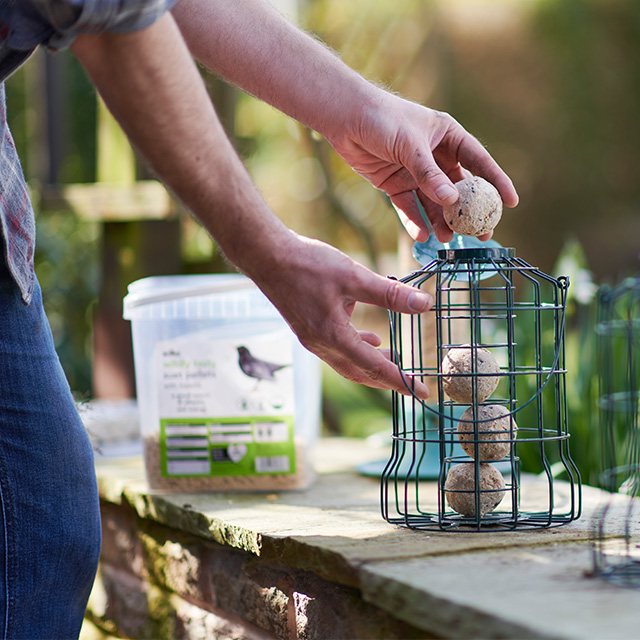
Where to put wild bird feeders
Wild birds are cautious creatures. Ideally, you should hang your bird feeder where it isn’t in easy reach of predatory cats, and somewhere which gives the birds a view on their surroundings; a tree branch is a good spot to start, as it also shelters your feeder from the worst of the weather.
Move your feeders around every now and again to give your surfaces a break from fallen seed debris.
Wild birds don’t just visit your garden for the feeders! Having leafy trees and bushes around gives them plenty of places to explore and hide in, and is a natural habitat for wild birds to feel at home.
Wild birds such as sparrows are also fond of a ‘dust bath’. If you have a dry patch of soil in summer, you may see them flitting about in it – it removes excess oil from their feathers and smothers harmful parasites.
Water for wild birds
You should always have a source of water for wild birds, which they will use for hydration as well as cleaning. It’s also very entertaining to watch the birds splash about!
A wild bird bath doubles up as a striking feature in your garden, but you could also use any kind of shallow bowl or a plant pot saucer as a great value alternative. Replace the water frequently, keep it clean, and keep an eye on it in winter by removing ice.
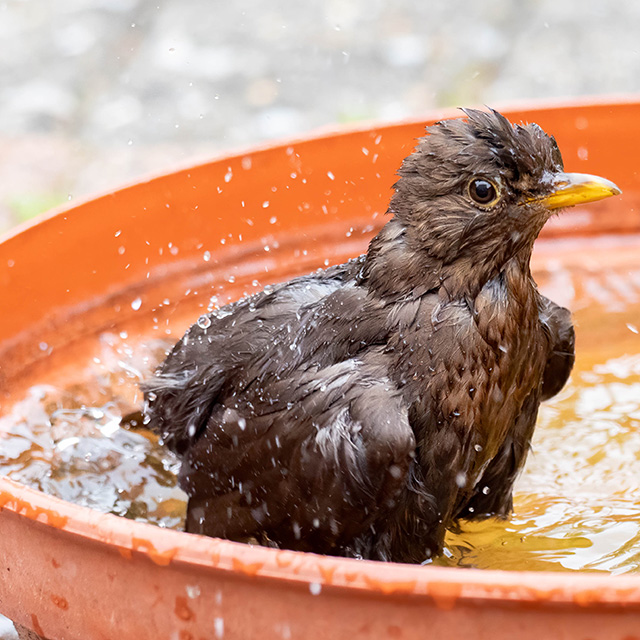
Tips for feeding wild birds
Keep feeders clean
You should clean your feeders regularly with soapy water to keep the birds happy and reduce the risk of airborne diseases.
Pest control
It isn’t just wild birds who will try eating bird food – your local squirrel can be a real pest. They are stubborn and incredibly resourceful, and will scare away the birds by trying to steal their food from under their beaks!
Squirrel-proof feeders have outer wire sections which only birds can fit through, but if you’re still having problems, try a natural deterrent by sprinkling some chilli powder into your wild bird food.
The capsaicin in chillis is what makes food spicy, and it affects all mammals, humans & squirrels included. Birds, however, don’t feel its effects, so sprinkle a small amount to keep the squirrels away!
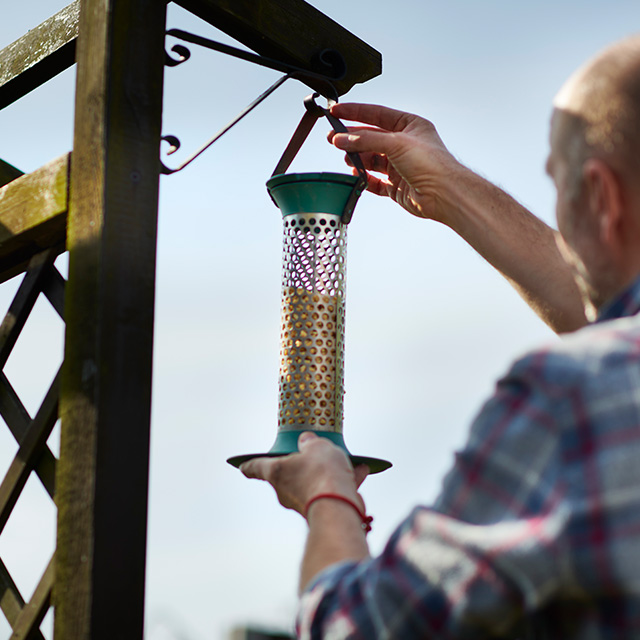
If you love watching the birds in your garden and have any tips for us, we’d love to hear from you! Feel free to get in touch on Facebook, Instagram or X or TikTok.


